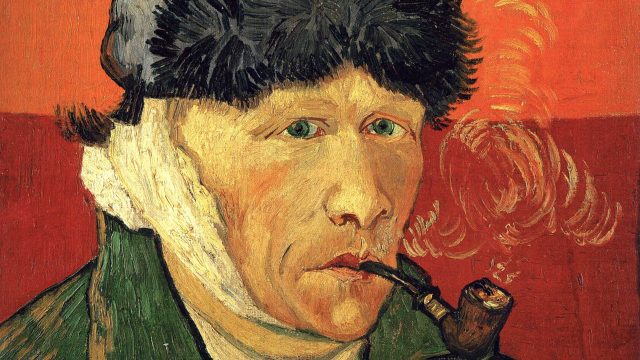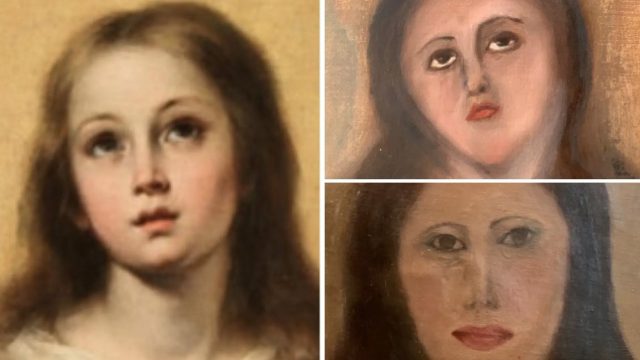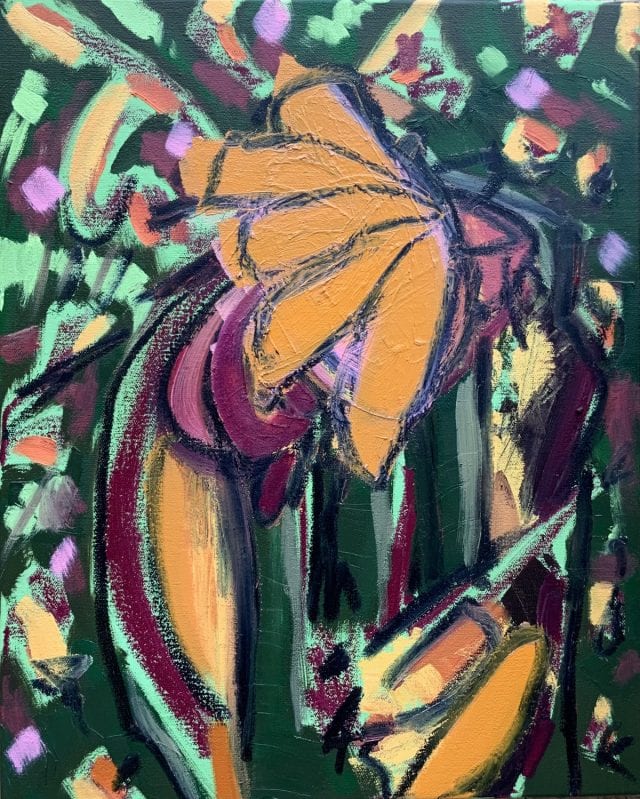It’s Never Too Late: Late-Career Artists
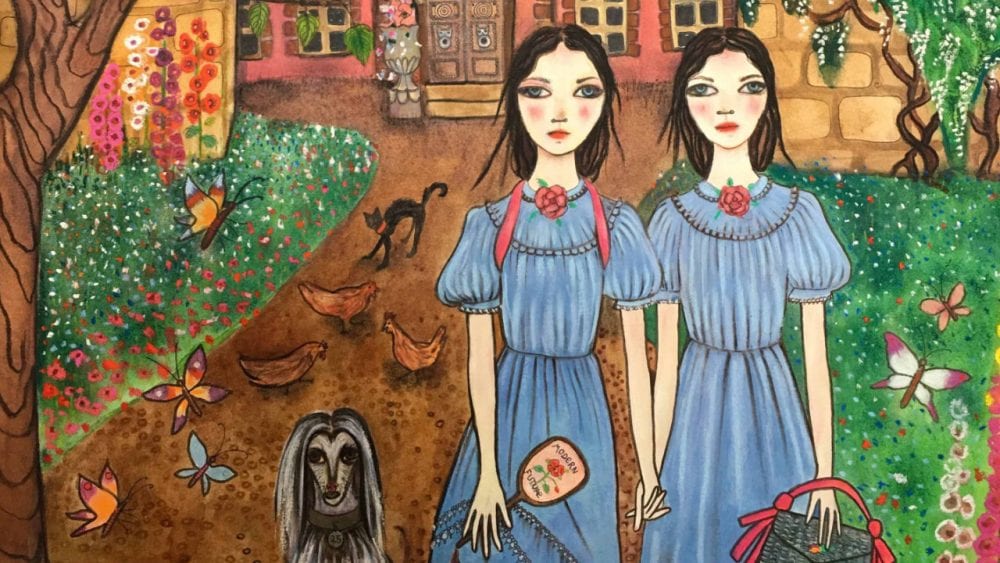
Van Gogh is often viewed as the exemplar of an artist that toiled during his lifetime without recognition, only to receive acclaim and fame at long last after his death. Whether the artist’s work was too groundbreaking or avant-garde, whether the artist’s gender impeded receiving recognition, or whether the artist could not get exposure, many other well-known artists experienced the same trajectory as Van Gogh.
Helen Downie (Unskilled Worker)
You would be forgiven for thinking that Helen Downie has had a long career, given her impressive CV and high-profile collaborations. In reality, she took up painting aged 48 and aided by the power of Instagram, a residency with Nick Knight, and a capsule collection for Gucci. Her career has skyrocketed in seven years. While she acknowledges that she always wanted to be an artist, the course of her life took her in other directions; and it was only after having children, pursuing various careers and surviving a serious illness that she found her way back to painting. She now sits in the front row of fashion shows, exhibits in commercial and museum shows, and has been profiled in Vanity Fair and Forbes. While her career is still in its early stages, her widespread acclaim suggests an impressive direction.
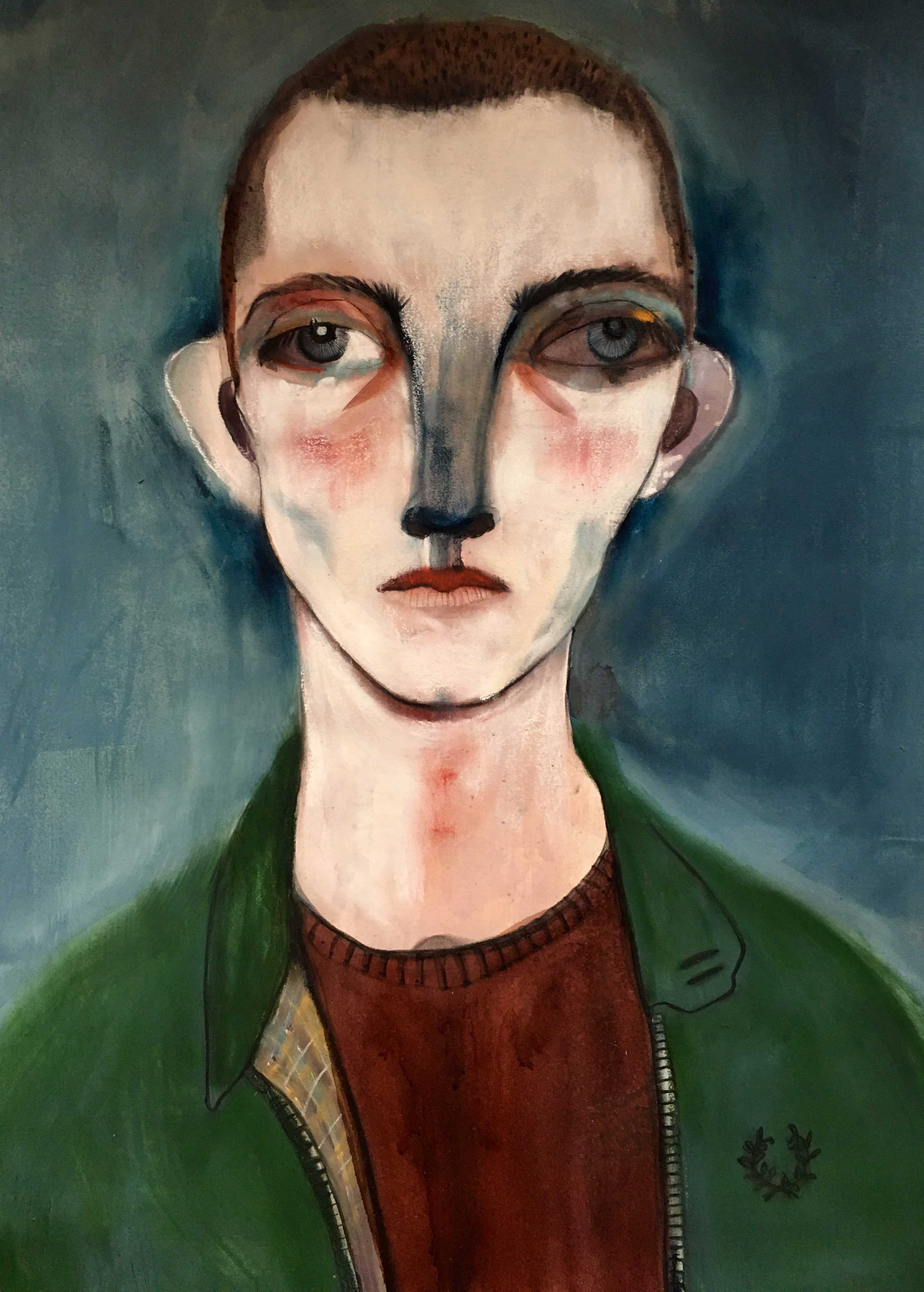
Far Away Boy (2016)
Source: Unskilled Worker
Grandma Moses (Anna Mary Robertson Moses)
Grandma Moses was a farmworker and mother whose interest in sewing, knitting and embroidery ultimately led to her beginning to paint aged 78 in 1938. She had no formal training and had only attended school until age 12. She lived her whole life in rural New York and Virginia. Her paintings almost always feature local pastoral scenes, houses, barns and chapels. When collector Louis Caldor discovered her, she began exhibiting her works in galleries; and she was included in a group show at the Museum of Modern Art. Her style was dubbed American primitive, which struck a chord with the American public and collectors abroad, resulting in 100 solo shows and 150 group exhibitions before her death, aged 101. Her works can be seen in museum collections of Art Institute of Chicago, Phillips Collection in Washington DC, Metropolitan Museum of Art (MOMA) in New York and the Bennington Museum in Vermont. They are still available at galleries and auction, where they regularly achieve six-figure hammer prices.
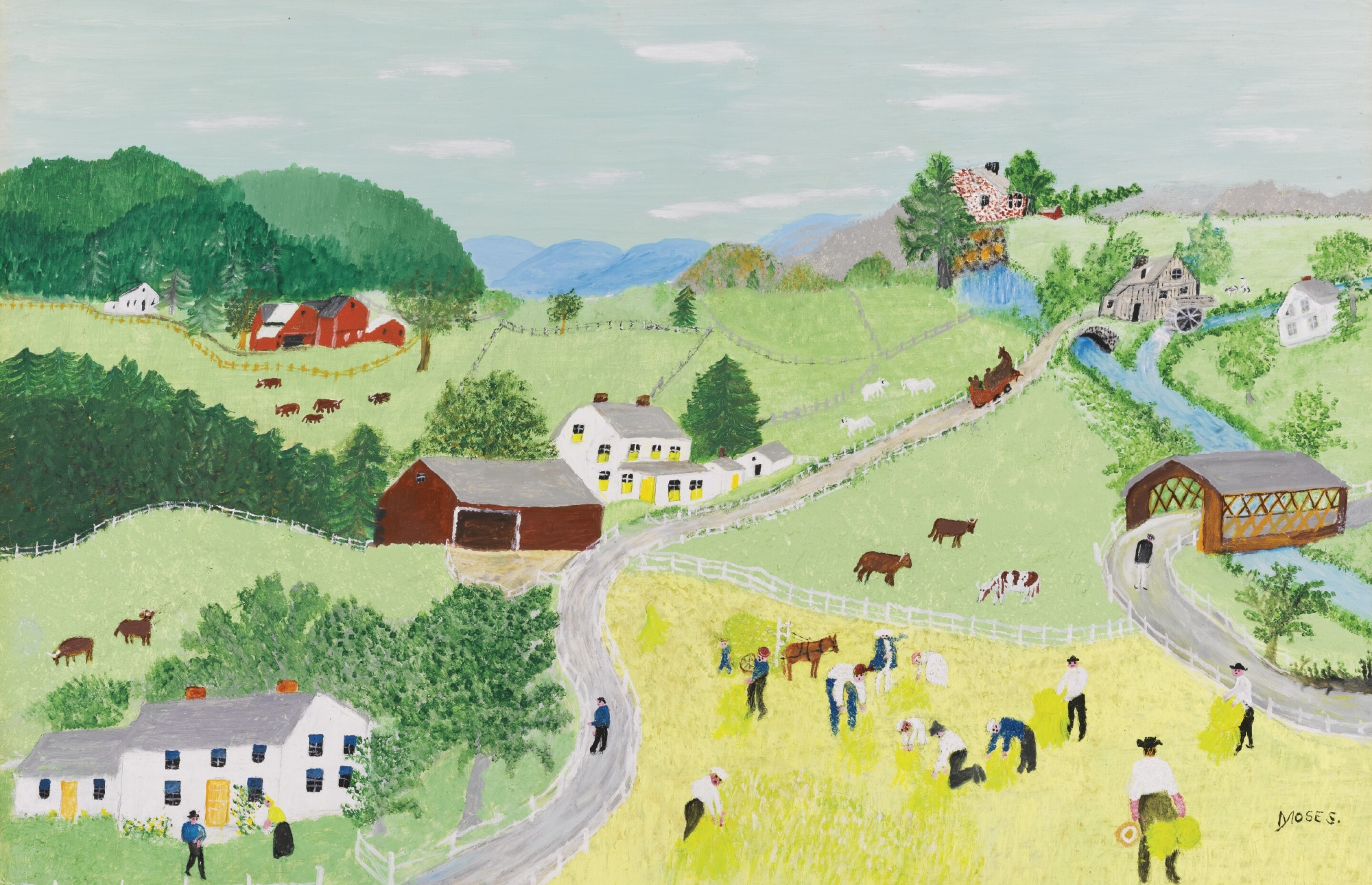
Gleaners
Source: Sotheby’s
Bill Traylor
Bill Traylor was born a slave in Alabama in c.1853 but was freed 12 years later. By 1939 (aged approximately 86), he was homeless and created paintings and drawings on found materials. He was ‘discovered’ by New South, a white artist collective in Alabama, which gave him his first show in 1940. While they appreciated his work and its unique value, collectors, unfortunately, didn’t. Bill Traylor was unable to sell any works. Nine years later, he died penniless without recognition or fame. New South retained 1,200 works he created, and he was finally recognised at an exhibition in Washington, DC, in 1982. In 2019, the Smithsonian put on ‘ Between Worlds: The Art of Bill Traylor’ and acknowledged him to be one of the most important American artists of the 20th century.
Noah Purifoy
Born in Alabama in 1917, Noah Purifoy trained as a teacher, served in the US Navy and studied to be a social worker before completing a Bachelors of Fine Arts at the age of 39. The 1965 Watts Riots in Los Angeles provided both the inspiration and materials for his first body of work: a sculpture made of the charred remains from the aftermath of the riots, titled 66 Signs of Neon. The parallels between Duchamp and Dada began to emerge at this point and continued throughout his career.
He founded the Watts Tower Arts Center, served on the California Arts Council and was committed to providing opportunities for artists and serving the black community. He later spent 15 years creating the Joshua Tree Outdoor Museum, a sculpture park with 10 acres of assemblage works entirely made from found materials, junk and rubbish. His works have been shown in museum group shows at the Getty Center in Los Angeles, Martin-Gropius-Bau in Berlin, the Hammer Museum in Los Angeles, MOMA PS1 in New York, Tate Modern and the National Gallery of Art in Washington D.C. In addition, the Los Angeles County Museum of Art (LACMA) did a retrospective of his work in 2015.

No Contest (bicycles), 1991
©Noah Purifoy Foundation / Courtesy Noah Purifoy Foundation
Clementine Hunter
Clementine Hunter’s work and artistic career have clear parallels to Grandma Moses. Clementine was born in Louisiana in c. 1886 on Hidden Hill Plantation (thought to be the inspiration for Uncle Tom’s Cabin) and was brought up speaking Creole French. She never learned to read or write, married twice and had five children. She worked as a cotton picker, cook and housekeeper before trying painting in her 50s. She still worked on the plantation during the day, so she painted at night and used whatever materials she could find. Like Grandma Moses, she employed a naive style to depict scenes of work and family on found materials or quilts.
Ultimately, a curator named François Mignon encouraged Hunter, providing her materials and helping her to sell her works for small sums. In 1955, she was the first black artist, male or female, to have a solo show at the New Orleans Museum of Fine Art, and her works are now in the National Museum of Women in the Arts, and the Smithsonian in Washington, DC; the High Museum of Art in Atlanta; the American Folk Art Museum in New York; the Museum of Fine Arts Boston; and they have been shown at LACMA and the Louvre. In her lifetime, Hunter made between 5,000 and 10,000 works; and while she never made enough money to rise above poverty, her auction record is now $70,150. She is widely recognised for her invaluable contribution to American folk art.
Other examples of artists who became commercially successful relatively late in their careers are Carmen Herrera, Katsushika Hokusai, Lubuaina Himid, Phyllida Barlow, Rose Hilton, Luchita Hurtado, Yayoi Kusama and Paul Cezanne.

